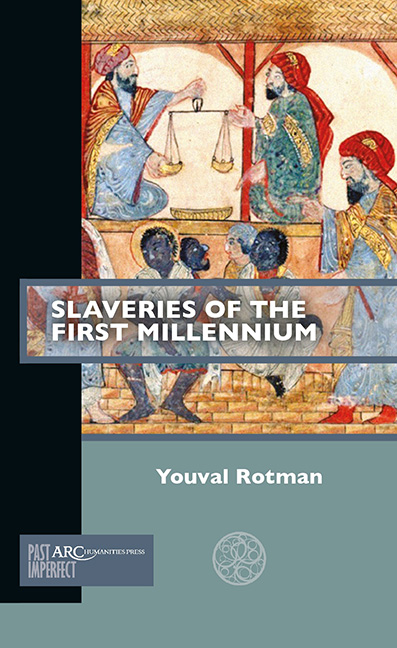Book contents
- Frontmatter
- Contents
- Introduction: Whence Slavery?
- Chapter 1 From Present to Past and Back
- Chapter 2 Slavery between Two Phenomena: Empire and Christianity
- Chapter 3 Enslavement, Captivity, and the Monotheistic Turn
- Chapter 4 New Polities, New Societies, New Economies
- Chapter 5 Migration, Integration, Connectivity
- Conclusion: Slavery as Historical Process— Towards a New Definition
- Further Reading
Introduction: Whence Slavery?
Published online by Cambridge University Press: 13 January 2022
- Frontmatter
- Contents
- Introduction: Whence Slavery?
- Chapter 1 From Present to Past and Back
- Chapter 2 Slavery between Two Phenomena: Empire and Christianity
- Chapter 3 Enslavement, Captivity, and the Monotheistic Turn
- Chapter 4 New Polities, New Societies, New Economies
- Chapter 5 Migration, Integration, Connectivity
- Conclusion: Slavery as Historical Process— Towards a New Definition
- Further Reading
Summary
If we try to imagine what slavery looks like, we will probably visualize black cotton pickers, chained Africans coerced into slave ships, Roman gladiators, slave markets in modern Libya, girls and women forced into a life of prostitution, children undertaking hard manual labour. For many of us the term slavery resonates a horrific experience of harsh exploitation in a way that restricts personal freedom and dignity. If we look for images on the internet, we will probably get the same results. Such images reflect the modern concept of slavery, which is composed of stories, histories, education, political awareness, and is also fed by the news. All of these conditions are based on acts of enslavement that reduce a human being to a tool, a device, a piece of merchandise, a means of profit and exploitation, in ways that contradict human rights, freedom, and dignity, a severe crime against a human being.
The perception of slavery as a crime against humanity is a product of the nineteenth-century abolitionist movement that fought with great success to eradicate slavery from the world. Its objective was to end phenomena that existed throughout history in myriad societies, phenomena that although very different one from another, had in common the legalization of the enslavement of human beings. The fight for the eradication of slavery went hand in hand with the development of the human rights movement. Yet, what appeared in the twentieth century as a great international political success seems in the twenty-first century now just wishful thinking. The currenthuman rights discourse refers to “modern slavery” or “contemporary slavery” and publicizes modern forms of enslavement that have become frequent over the last thirty years. This raises a disturbing question: is slavery back? And if so, are we dealing with the same kind of phenomenon, the same slavery?
To take a recent case, in January 2019 a federal jury convicted the couple Mohamed Toure and Denise Cros-Toure of Southlake, Texas, for the forced labour of a Guinean girl for sixteen years. Three months later they were sentenced to seven years in prison each and $288,620.24 in restitution. The couple brought the girl from her Guinean village in 2000 and forced her to work without pay in their home as a housekeeper, cook, and nanny. The case was tried as a case of forced labour, meaning work which a person is coerced to provide against their will.
- Type
- Chapter
- Information
- Slaveries of the First Millennium , pp. 1 - 8Publisher: Amsterdam University PressPrint publication year: 2021



